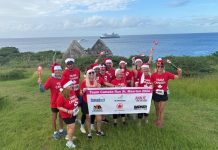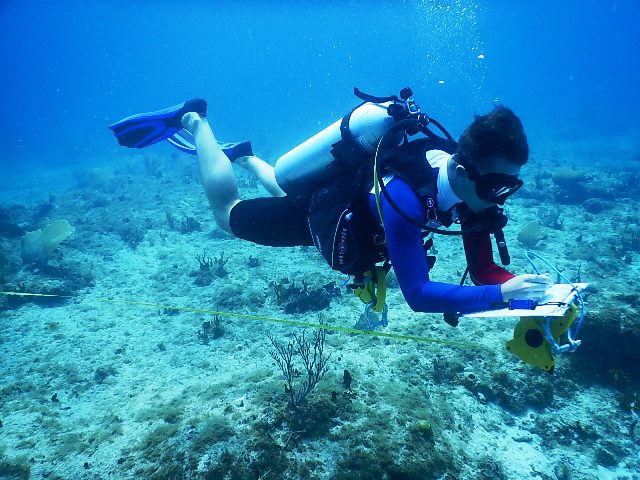PHILIPSBURG, Sint Maarten — The Nature Foundation initiated their coral reef monitoring program according to the Global Coral Reef Monitoring Protocol GCRMN-Caribbean baseline scientific monitoring methods last week.
Staff of the Nature Foundation attended a Coral Reef Monitoring Workshop hosted by the Regional Activities Center of the SPAW Protocols of the Cartagena Convention on Biodiversity in the Caribbean in Jamaica in April and is now applying the methods here on Sint Maarten. Reef monitoring is conducted every year to determine the health, composition and state of our reefs.
Following the collaborative GCRMN-Caribbean method gives Coral Reef Managers more tools to compare reef monitoring data which will be widely available for a variety of purposes including: to contributing to our understanding of the processes that shape coral reefs; and providing actionable advice to policy makers, stakeholders and communities at variety of special scales from local to Caribbean wide.
The Nature Foundation surveys mainly dive sites in the Man of War Shoal Marine Protected Area, however other important dive sites around the island will be surveyed as well. So far four dive sites are already monitored for their reef composition: Frenchman’s Reef, Mikes Maze, Proselyte Reef and Long Bay Reef. In the coming weeks, five more dive sites will be monitored: Fish Bowl, Hen and Chicks, Shark Hotel, Cable Reef and Moonscape.
All measurements are conducted along a transect line and repeated five times on one dive sites. First, abundance and biomass of all fish species is determined, secondly the cover of reef organisms (corals) will be analyzed based on photo quadrats made during the dives and photo quadrats will be also assessed for coral health.
Monitoring is also done looking for coral recruitments (juvenile corals) and algae coverage and height. Lastly, invertebrate species (sea urchins, sea cucumbers, lobster and conch) are counted and water quality is measured. These measurements will help us to better understand our reefs and to determine if our reefs are doing well.






























